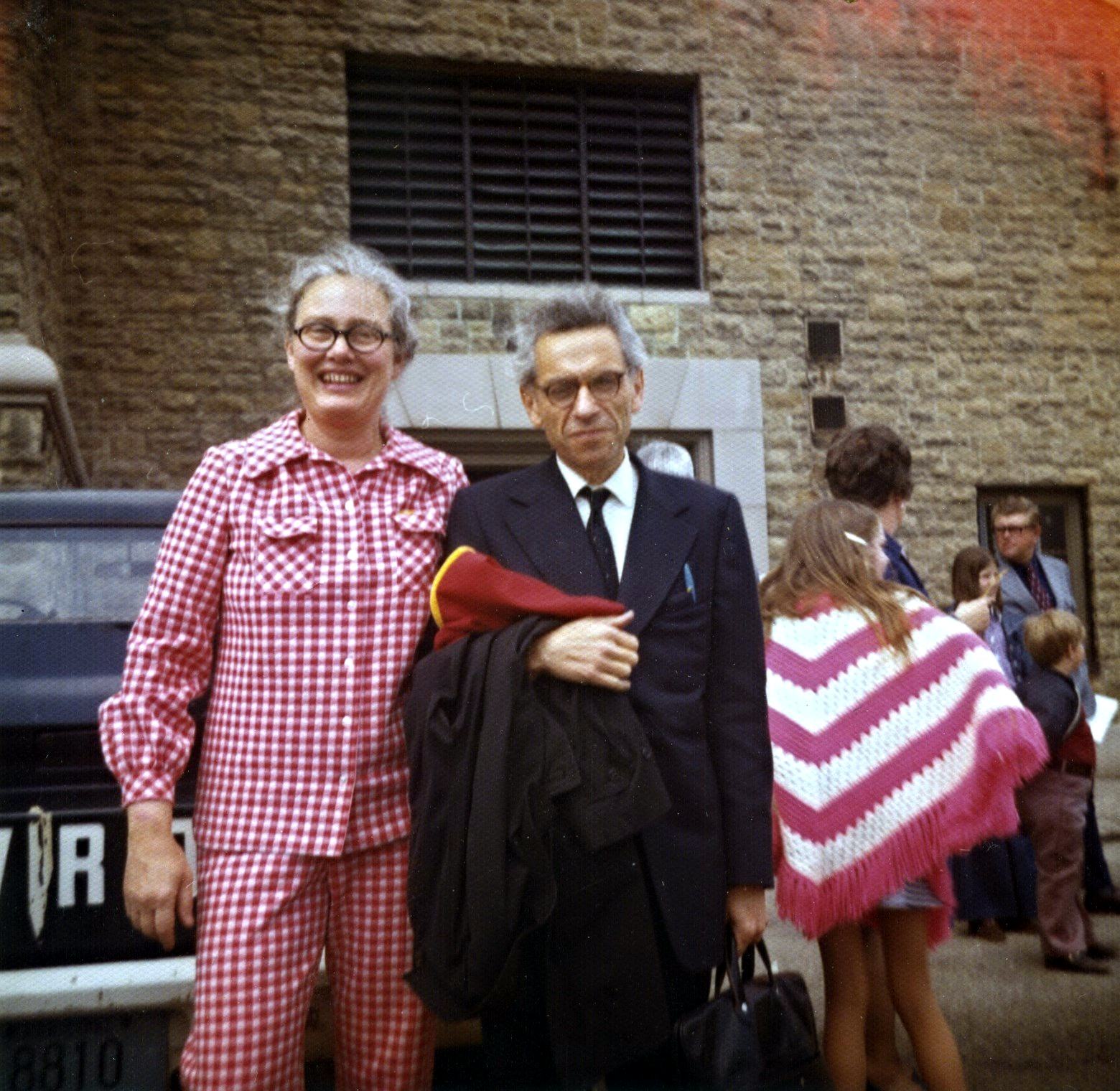by István Juhász
Many of us who had close personal and professional contact with Mary Ellen Rudin received with deep sorrow the news that she died on March 18 in the eighty-ninth year of her life. In this age of the Wikipedia and numerous other easily available public sources of information, I don’t think it’s necessary for me to give a detailed account of her great scientific achievements, most of which were done in the field of general and set-theoretic topology. Instead, I take this opportunity to recall a few personal memories about her.

The first of these concerns a paper of hers in which she presented an example of a first-countable and CCC regular space that is not separable and which, as a student, I presented in our topology seminar. I still remember how proud it made me that I could understand, and make more or less clear to the audience, her very complicated construction. I only much later found out the explanation of the rather nonstandard notation and terminology she used (and which made her technically very complicated ingenious construction even harder to understand): She was brought up in the (in)famous Moore school in Texas, where students were forbidden to study math books; they had to discover everything on their own. I recall a story I heard from Paul Erdős, a good friend of the Rudins, that illustrates this. On one of his visits with them he was surprised to find out that she did not know what a Hilbert space was. This was sometime in the 1950s, and, of course, she later became much more familiar with and well versed in what was going on in her field.
Our first meeting in person took place at the IMU Congress in Nice in the summer of 1970. Together with my friend and collaborator András Hajnal we were eager to meet her, and this happened right after she arrived in Nice. Her first sentence to us was “I just proved that there is a Dowker space;” i.e., a normal space whose product with the unit interval is not normal. To appreciate the weight of this sentence, one should know that this meant she solved the most important open problem of general topology of the 1960s.
The next year I made a short, basically personal, visit to North America, and she invited me to Madison to give a talk there. That was the first of many occasions when she, as a caring host, treated me so well, both mathematically and socially. Of course, she invited me to their beautiful house designed by Frank Lloyd Wright, cooked a great meal for me, and showed me around town. I was glad to be able to return some of her favors in the summer of 1973 when she came to Hungary, together with her two then-teenage daughters, for a topology conference.

She was the architect of arranging a visiting position for me at the University of Wisconsin–Madison for the academic year 1974–75. This was not a trivial thing in those Cold War times. One result of this visit was our joint paper [1] with Ken Kunen, which is a very frequently cited paper in the field of set-theoretic topology. This visit was followed by many more visits to Madison, most of them organized by her. But I’d like to mention another trip of mine to the US in which she played a substantial role.
This took place in 1983 when my friend Endre Szemerédi had been diagnosed with a serious case of cancer while on a visit in the US. Of course, after having found this out, I turned to Mary Ellen to ask if she could arrange a visit to Madison for me so that I could see my ailing friend. It turned out that this was not possible because of some financial problems at UW Madison. Still, she managed to convince the head of another math department in the US — as I later found out, not without some arm twisting — to invite me, thus making it possible for me to visit my friend right after he had a very serious operation. This story has a very happy ending: My friend has completely recovered, and, as is well known, in 2012 he was awarded the Abel Prize.
I was fortunate to be present at Mary Ellen’s retirement meeting in Madison in 1991, where I could witness her efforts trying to help Boris Shapirovskii, another great mathematician fighting cancer, unfortunately in his case with no success.
I was very happy and proud when in 1995, mainly thanks to the strong recommendation of András Hajnal, she was elected to be an honorary member of the Hungarian Academy of Sciences. Moreover, the next year she and her husband, Walter, after visiting Prague and Vienna, Walter’s hometown, managed to come to Budapest so that she could deliver her acceptance address at the academy. A high point of this trip was that my family had the good fortune to host a meal in our home for the Rudins, the Shelahs, the Hajnals, and Paul Erdős, who, sadly, died just a few weeks later.
I last saw Mary Ellen in person in 2009 at the Kunen Fest, Ken Kunen’s retirement celebration. Although quite fragile physically, she was as cheerful as ever. And the last email I got from her was sent in November of 2010, congratulating us on the occasion of the birth of our grandson.